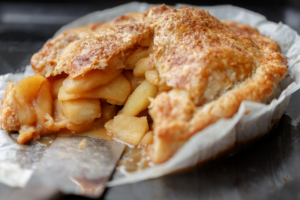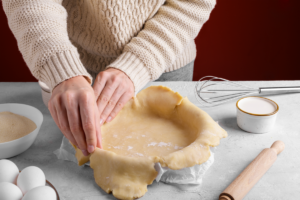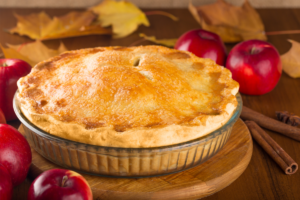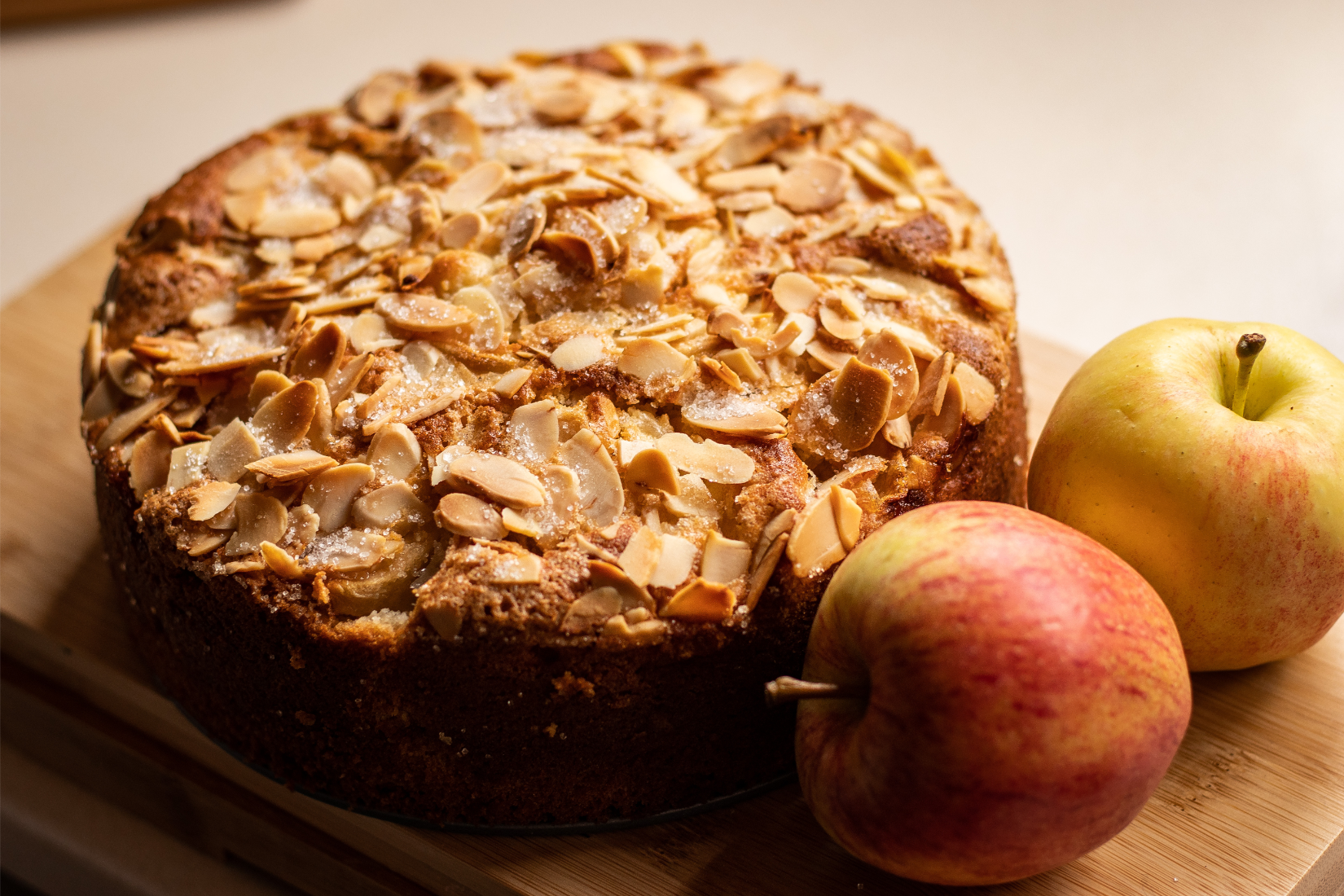Embark on a delightful journey through the world of the French Apple Cake, a culinary gem that embodies the essence of French baking. This article unfolds the layers of this rustic yet elegant dessert, from its historical roots to the modern kitchen. We’ll dive into the nuances of selecting the perfect apples, the art of balancing flavors, and the joy of creating a cake that’s both simple and sophisticated. Whether you’re a baking enthusiast or a lover of all things sweet, this guide promises to enrich your understanding and appreciation of this beloved French classic.
The Essence of French Baking
Ah, the French Apple Cake! It’s a symphony of flavors, where the humble apple takes center stage. This cake isn’t about flashy decorations or complex techniques; it’s about celebrating the natural beauty and taste of its ingredients. Imagine biting into a slice: the apples are tender yet firm, enveloped in a buttery, rum-infused cake that’s just sweet enough. It’s a dance of textures and flavors that’s simply irresistible.
A Brief History
Let’s take a stroll down memory lane. The French Apple Cake has its roots in the quaint kitchens of rural France. Originally, it was a homely treat, often whipped up to celebrate the apple harvest. Each region in France put its own spin on it, but the heart of the cake remained the same – a tribute to the apple. Over the years, this cake has waltzed its way into the hearts of people across the globe, becoming a cherished staple in the world of desserts.

Key Ingredients and Variations
Choosing the Right Apples
When it comes to the French Apple Cake, the apple isn’t just an ingredient; it’s the star of the show! The choice of apple can make or break your cake. You want apples that hold their shape when baked, offering a delightful contrast to the tender cake. Varieties like Granny Smith, Honeycrisp, or Pink Lady are excellent choices. They bring the perfect balance of tartness and sweetness, enhancing the overall flavor profile of the cake. Remember, the right apple can elevate your baking from good to magnifique!
Essential Ingredients and Substitutes
Apart from apples, the cake’s charm lies in its simplicity. The basic ingredients include all-purpose flour, baking powder, salt, unsalted butter, sugar, eggs, vanilla extract, and a touch of dark rum for that quintessential French flair. If you’re feeling adventurous, why not experiment with substitutes? Almond flour can add a nutty depth, while a splash of bourbon or brandy can replace rum for a different twist. The beauty of this cake lies in its versatility, allowing you to play around while keeping the soul of the recipe intact.
Regional Variations
Across France, you’ll find delightful variations of this classic cake. Some regions might add a sprinkle of cinnamon or nutmeg for warmth, while others might incorporate a layer of apricot jam for a hint of tartness. These regional touches not only add diversity but also tell a story of the local tastes and traditions.
Modern Twists
In the modern kitchen, the French Apple Cake continues to evolve. Chefs and home bakers alike are introducing innovative twists, like incorporating caramelized apples for a richer flavor or adding a crumble topping for extra texture. These contemporary variations are a nod to the cake’s enduring appeal and its ability to adapt to changing tastes and trends.
Step-by-Step Baking Guide
Equipment Needed
Before we dive into the baking process, let’s gear up with the right equipment. You’ll need a 9-inch springform or regular cake pan, a couple of mixing bowls, a whisk, and an electric mixer. Don’t forget a rubber spatula for folding in those luscious apple chunks. Having the right tools at hand makes the baking process a breeze and ensures your French Apple Cake turns out just perfect.

Step-by-Step Baking Instructions
Now, let’s get down to business! Here’s a foolproof guide to creating your very own French Apple Cake:
- Preparation: Start by preheating your oven to 350°F (175°C). Grease your cake pan and line it with parchment paper if you’re not using a springform pan.
- Mix Dry Ingredients: In a bowl, whisk together 1 cup of all-purpose flour, 1 teaspoon of baking powder, and ¼ teaspoon of salt.
- Cream Butter and Sugar: In another bowl, cream together ½ cup of unsalted butter and ⅔ cup of granulated sugar until light and fluffy. This step is crucial for a light cake texture.
- Add Eggs and Flavors: Beat in 2 large eggs, one at a time, ensuring each is well incorporated. Stir in 1 teaspoon of vanilla extract and 3 tablespoons of dark rum for that distinctive flavor.
- Combine Dry and Wet Ingredients: Gradually mix the dry ingredients into the wet mixture until just combined. Avoid overmixing to keep the cake tender.
- Fold in Apples: Peel, core, and chop your apples into ½-inch cubes. Gently fold these into the batter, distributing them evenly.
- Bake the Cake: Pour the batter into the prepared pan, smoothing the top. Bake for about 40 minutes or until golden and a toothpick inserted into the center comes out clean.
- Cool and Serve: Let the cake cool in the pan, then run a knife around the edges before unmolding. Serve it warm or at room temperature, perhaps with a dollop of whipped cream or a scoop of vanilla ice cream.
And voilà! You’ve just baked a classic French Apple Cake. The aroma of baked apples and buttery cake filling your kitchen is sure to bring a smile to your face.

Serving and Presentation
Accompaniments
Once your French Apple Cake is baked to perfection, it’s time to think about accompaniments. This cake is delightful on its own, but a few simple additions can elevate it to a whole new level. A dollop of lightly sweetened whipped cream adds a creamy contrast to the dense cake. For a more indulgent treat, a scoop of vanilla ice cream melting over a warm slice is heavenly. If you’re leaning towards a healthier option, a side of fresh berries complements the cake’s sweetness beautifully. Remember, the key is to enhance, not overpower, the cake’s natural flavors.
Presentation Ideas
Presentation plays a big role in turning your French Apple Cake into a showstopper. Start by dusting the top with a light sprinkle of confectioners’ sugar – it’s amazing how this simple step can give the cake an elegant touch. Serving the cake on a vintage plate or a rustic wooden board can add charm to your presentation. If you’re serving it at a gathering, slicing the cake at the table can be a delightful little ceremony, making your guests feel special. Garnish with a sprig of mint or a few apple slices for that extra flair. Remember, the beauty of this cake lies in its simplicity, so let that shine through in your presentation.
Health and Nutrition
Caloric Content
Understanding the nutritional aspect of the foods we enjoy is crucial, and the French Apple Cake is no exception. A typical slice contains calories that mainly come from carbohydrates and fats. The exact caloric content can vary depending on the ingredients used and the serving size. While it’s a delightful treat, it’s important to enjoy it in moderation, especially if you’re mindful of your calorie intake.


